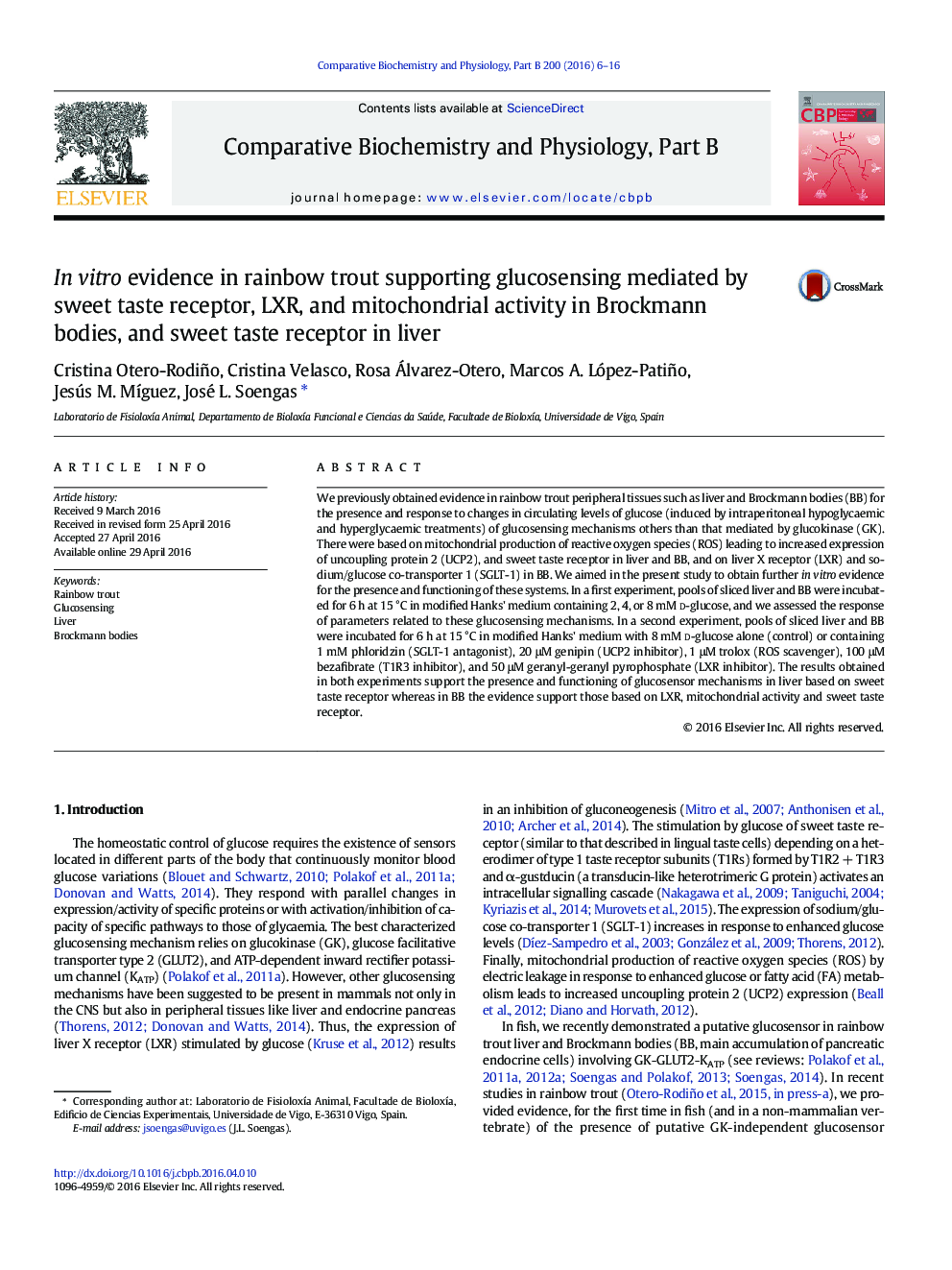| Article ID | Journal | Published Year | Pages | File Type |
|---|---|---|---|---|
| 1974992 | Comparative Biochemistry and Physiology Part B: Biochemistry and Molecular Biology | 2016 | 11 Pages |
We previously obtained evidence in rainbow trout peripheral tissues such as liver and Brockmann bodies (BB) for the presence and response to changes in circulating levels of glucose (induced by intraperitoneal hypoglycaemic and hyperglycaemic treatments) of glucosensing mechanisms others than that mediated by glucokinase (GK). There were based on mitochondrial production of reactive oxygen species (ROS) leading to increased expression of uncoupling protein 2 (UCP2), and sweet taste receptor in liver and BB, and on liver X receptor (LXR) and sodium/glucose co-transporter 1 (SGLT-1) in BB. We aimed in the present study to obtain further in vitro evidence for the presence and functioning of these systems. In a first experiment, pools of sliced liver and BB were incubated for 6 h at 15 °C in modified Hanks' medium containing 2, 4, or 8 mM d-glucose, and we assessed the response of parameters related to these glucosensing mechanisms. In a second experiment, pools of sliced liver and BB were incubated for 6 h at 15 °C in modified Hanks' medium with 8 mM d-glucose alone (control) or containing 1 mM phloridzin (SGLT-1 antagonist), 20 μM genipin (UCP2 inhibitor), 1 μM trolox (ROS scavenger), 100 μM bezafibrate (T1R3 inhibitor), and 50 μM geranyl-geranyl pyrophosphate (LXR inhibitor). The results obtained in both experiments support the presence and functioning of glucosensor mechanisms in liver based on sweet taste receptor whereas in BB the evidence support those based on LXR, mitochondrial activity and sweet taste receptor.
